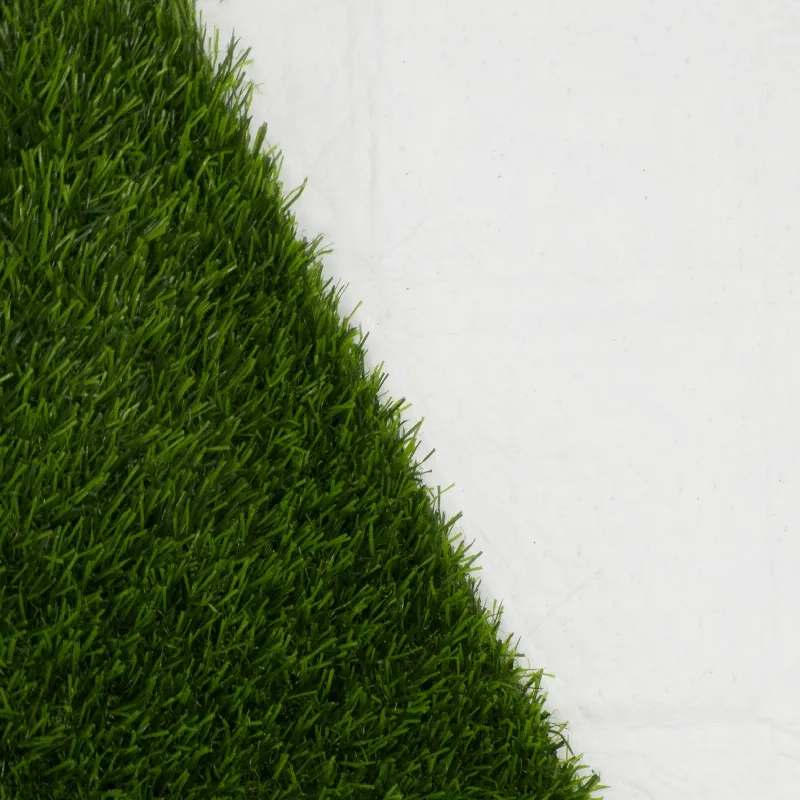
- Afrikaans
- Arabic
- Belarusian
- Bengali
- Czech
- Danish
- Dutch
- English
- Esperanto
- Estonian
- Finnish
- French
- German
- Greek
- Hindi
- Hungarian
- Icelandic
- Indonesian
- irish
- Italian
- Japanese
- kazakh
- Rwandese
- Korean
- Kyrgyz
- Lao
- Latin
- Latvian
- Malay
- Mongolian
- Myanmar
- Norwegian
- Persian
- Polish
- Portuguese
- Romanian
- Russian
- Serbian
- Spanish
- Swedish
- Tagalog
- Tajik
- Thai
- Turkish
- Turkmen
- Ukrainian
- Urdu
- Uighur
- Uzbek
- Vietnamese
Exploring the Benefits and Applications of Artificial Green Grass Solutions
Nov . 10, 2024 16:38 Back to list
The Allure of Artificial Grass A Green Revolution in Landscaping
In recent years, the shift towards sustainability has brought a renewed interest in alternative landscaping solutions. One of the most prominent innovations in this area is artificial grass, a product that combines practicality with aesthetic appeal. Often touted for its lush, green appearance, artificial grass not only enhances the visual appeal of gardens and lawns but also serves as an eco-friendly alternative to traditional turf. This article delves into the manifold benefits of artificial grass, highlighting why it is becoming a popular choice for homeowners and commercial establishments alike.
The Emergence of Artificial Grass
Artificial grass, or synthetic turf, was originally developed for use in sports settings, particularly on playgrounds and athletic fields. However, advancements in technology have transformed this once niche product into a mainstream option for residential and commercial landscaping. With continuous improvements in texture, color, and durability, modern artificial grass is nearly indistinguishable from natural grass. Its vibrant green aesthetic is a key factor in its growing popularity, enabling homeowners to maintain a pristine lawn without the diligence required for real grass care.
Environmental Benefits
One of the most compelling reasons for choosing artificial grass is its environmental impact. Traditional grass requires a significant amount of water, especially in regions prone to drought. In contrast, artificial grass is a water-efficient solution that can mitigate the effects of water scarcity. By reducing water consumption, homeowners contribute to water conservation efforts while still enjoying the look of a lush, green lawn.
Moreover, artificial grass eliminates the need for harmful pesticides and fertilizers, which can leach into groundwater and harm the environment. Without the need for chemical treatments, artificial lawns provide a safer play area for children and pets, promoting a healthier outdoor environment. The environmental benefits extend beyond individual yards; widespread adoption of artificial grass can lead to substantial reductions in regional water usage and pesticide pollution.
Low Maintenance Needs
artificial grass green

The maintenance of natural grass can be burdensome. Regular mowing, aeration, fertilizing, weeding, and watering demand not only time and effort but also ongoing financial investment. In contrast, artificial grass requires minimal maintenance. A simple periodic brushing, occasional rinsing to remove dust and debris, and infrequent replacement of infill materials are usually all that’s necessary to keep an artificial lawn looking vibrant and inviting. This ease of maintenance is particularly advantageous for busy families, elderly homeowners, and commercial establishments that wish to reduce maintenance costs and labor.
Year-Round Aesthetics
One of the highlights of artificial grass is its ability to maintain its green allure throughout the year, regardless of the season or climate. Its resilience makes it an attractive option for regions with extreme weather fluctuations. While natural grass can turn brown and patchy in droughts or during heavy snowfall, artificial grass remains consistently vibrant. This feature allows homeowners to enjoy a beautiful landscape regardless of environmental conditions, making it an ideal investment for those seeking year-round outdoor aesthetics.
Economic Considerations
Though the initial installation cost of artificial grass can be higher than that of natural grass, the long-term savings on water bills, maintenance costs, and lawn care equipment can be significant. In the long run, many homeowners find that artificial grass is a cost-effective solution that pays for itself over time. Additionally, it can increase property values by enhancing curb appeal and providing a low-maintenance outdoor space that appeals to prospective buyers.
Conclusion
As we navigate an era increasingly focused on sustainability, artificial grass emerges as an attractive alternative to traditional landscaping alternatives. Its environmental benefits, low maintenance needs, year-round appeal, and long-term cost savings illustrate why it has gained traction among homeowners and businesses alike. Whether used in residential gardens, playgrounds, or commercial properties, artificial grass presents a green solution that marries aesthetics with practicality. As more individuals recognize the advantages of this green revolution, artificial grass is likely to play a pivotal role in shaping the future of landscaping. By making a conscious choice to adopt artificial grass, we can contribute to a more sustainable and beautiful environment for generations to come.
-
The Benefits of Artificial Turf for Indoors
NewsJul.15,2025
-
How Artificial Grass Suppliers Ensure Quality Products
NewsJul.15,2025
-
Artificial Grass and Pets: A Space for Relaxation
NewsJul.08,2025
-
Balcony & Outdoor Decoration with Artificial Grass
NewsJul.08,2025
-
Best Indoor Artificial Grass for Home
NewsJul.07,2025
-
Best Pet Turf for Dogs: Safe & Durable Artificial Grass Options
NewsJul.07,2025
Products categories









